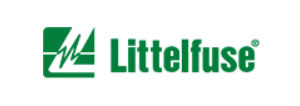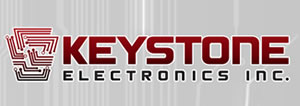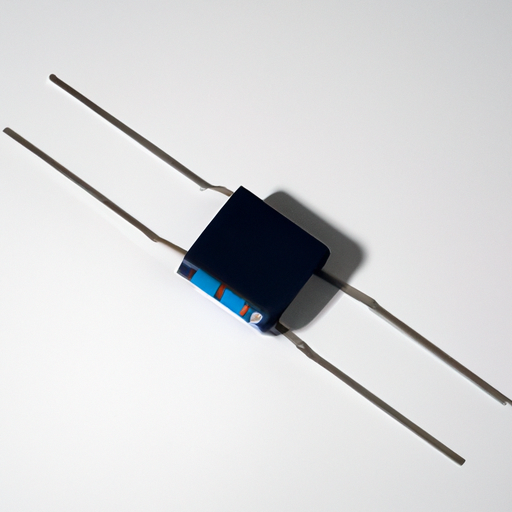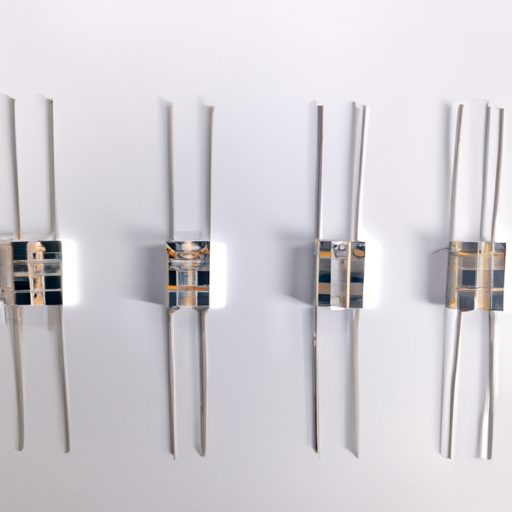An article takes you through what Current sensor resistoris
A current sensor resistor, also known as a shunt resistor, is a type of resistor that is specifically designed to measure the current flowing through a circuit. It is a crucial component in many electronic devices and systems, as it allows for accurate monitoring and control of current levels.In this article, we will explore the function and importance of current sensor resistors, as well as their various types and applications in different industries.Function of Current Sensor ResistorsThe primary function of a current sensor resistor is to measure the current flowing through a circuit by converting it into a voltage drop. This voltage drop is then measured and used to calculate the current passing through the resistor using Ohm's Law (V = I * R), where V is the voltage drop across the resistor, I is the current flowing through the resistor, and R is the resistance of the resistor.Current sensor resistors are typically placed in series with the load or device that is being monitored. As current flows through the circuit, it encounters the resistance of the resistor, causing a voltage drop to occur. This voltage drop is proportional to the current passing through the resistor, allowing for accurate current measurement.Importance of Current Sensor ResistorsCurrent sensor resistors play a crucial role in various electronic devices and systems, as they provide essential information about the current levels in a circuit. This information is vital for monitoring and controlling the performance of the device, ensuring that it operates within safe and optimal parameters.Some of the key reasons why current sensor resistors are important include:1. Overcurrent Protection: Current sensor resistors are often used in circuit protection systems to detect and prevent overcurrent conditions. By monitoring the current levels in a circuit, these resistors can trigger protective measures, such as shutting off power or activating a circuit breaker, to prevent damage to the device or system.2. Power Management: Current sensor resistors are also used in power management systems to monitor and regulate the power consumption of electronic devices. By accurately measuring the current flowing through a circuit, these resistors help optimize power usage and improve energy efficiency.3. Fault Detection: Current sensor resistors are essential for detecting faults and malfunctions in electronic systems. By monitoring the current levels in a circuit, these resistors can identify abnormal current spikes or drops that may indicate a fault, allowing for timely troubleshooting and maintenance.Types of Current Sensor ResistorsThere are several types of current sensor resistors available, each with its own unique characteristics and applications. Some of the most common types include:1. Precision Shunt Resistors: These resistors are designed for high-accuracy current measurement applications, where precise current monitoring is required. They have low tolerance and temperature coefficients, making them ideal for sensitive electronic devices.2. Power Shunt Resistors: Power shunt resistors are designed to handle high current levels and power dissipation. They are commonly used in high-power applications, such as motor control systems and power distribution networks.3. Surface Mount Shunt Resistors: These resistors are designed for compact and space-constrained applications, where traditional through-hole resistors may not be suitable. They are mounted directly onto the surface of a circuit board, making them ideal for miniaturized electronic devices.Applications of Current Sensor ResistorsCurrent sensor resistors are used in a wide range of industries and applications, where accurate current measurement is essential. Some of the common applications of current sensor resistors include:1. Automotive Industry: Current sensor resistors are used in automotive systems, such as battery management, motor control, and power distribution. They help monitor and regulate the current levels in various components, ensuring safe and efficient operation of vehicles.2. Industrial Automation: Current sensor resistors are essential for monitoring and controlling the current levels in industrial automation systems, such as robotics, conveyor belts, and manufacturing equipment. They help optimize power usage and improve the overall efficiency of the system.3. Renewable Energy: Current sensor resistors are used in renewable energy systems, such as solar panels and wind turbines, to monitor the current levels generated by the energy sources. They help optimize power production and ensure the smooth operation of the renewable energy system.In conclusion, current sensor resistors are essential components in electronic devices and systems, providing accurate current measurement and control. They play a crucial role in various industries and applications, helping to ensure safe and efficient operation of electronic devices. By understanding the function, importance, types, and applications of current sensor resistors, engineers and designers can effectively incorporate them into their designs to achieve optimal performance and reliability.
2024-03-25
1
What components and modules does Resistor standard contain?
Resistor is a popular open-source library for building web applications in React. It provides a set of components and modules that help developers create responsive and interactive user interfaces. In this article, we will explore the various components and modules that Resistor standard contains, and how they can be used to build modern web applications.Components:1. Button: The Button component is a simple yet versatile component that can be used to create various types of buttons, such as primary, secondary, and tertiary buttons. It also supports different sizes and styles, making it easy to customize the look and feel of buttons in your application.2. Input: The Input component is used to create input fields for forms. It supports various types of inputs, such as text, password, email, and number inputs. It also provides validation and error handling capabilities, making it easy to create robust forms in your application.3. Checkbox: The Checkbox component is used to create checkboxes for selecting multiple options. It supports both controlled and uncontrolled modes, making it easy to manage the state of checkboxes in your application.4. Radio: The Radio component is used to create radio buttons for selecting a single option from a list of options. It also supports both controlled and uncontrolled modes, making it easy to manage the state of radio buttons in your application.5. Select: The Select component is used to create dropdown select boxes for selecting options from a list. It supports both single and multiple selection modes, making it easy to create versatile select boxes in your application.6. Modal: The Modal component is used to create modal dialogs for displaying content on top of the main page. It supports various features, such as custom headers, footers, and close buttons, making it easy to create interactive modal dialogs in your application.7. Tabs: The Tabs component is used to create tabbed interfaces for organizing content into different sections. It supports both horizontal and vertical tab layouts, making it easy to create versatile tabbed interfaces in your application.8. Tooltip: The Tooltip component is used to create tooltips for displaying additional information when hovering over an element. It supports various features, such as custom positions, styles, and animations, making it easy to create informative tooltips in your application.Modules:1. Theme: The Theme module is used to customize the look and feel of components in your application. It provides a set of predefined themes, such as light and dark themes, as well as the ability to create custom themes using CSS variables.2. Form: The Form module is used to manage form state and validation in your application. It provides a set of hooks and utilities for handling form submissions, input validation, and error handling, making it easy to create robust forms in your application.3. Animation: The Animation module is used to create animations and transitions in your application. It provides a set of predefined animations, such as fade, slide, and scale animations, as well as the ability to create custom animations using CSS and JavaScript.4. Layout: The Layout module is used to create responsive layouts in your application. It provides a set of grid and flexbox components for creating flexible and adaptive layouts, making it easy to build responsive web applications.5. Utils: The Utils module is used to provide various utility functions and helpers for common tasks in your application. It includes functions for handling dates, strings, arrays, and objects, making it easy to perform common operations in your application.In conclusion, Resistor standard contains a rich set of components and modules that help developers build modern web applications in React. By leveraging these components and modules, developers can create responsive and interactive user interfaces with ease. Whether you are building a simple form or a complex tabbed interface, Resistor has the tools you need to bring your ideas to life.
2024-03-24
0
What kind of product is Resistor box?
A resistor box is a device used in electrical circuits to control the flow of current. It is a type of passive electronic component that resists the flow of electricity, thereby reducing the voltage and current in a circuit. Resistor boxes are commonly used in a variety of applications, including electronics, telecommunications, and automotive systems.Resistor boxes come in various shapes and sizes, depending on the specific requirements of the circuit in which they are used. They are typically made of a ceramic or metal material, with a resistive element that is wound around a core. The resistance value of a resistor box is measured in ohms, and can range from a few ohms to several megaohms.One of the main functions of a resistor box is to limit the amount of current flowing through a circuit. This is important in preventing damage to sensitive electronic components, as well as ensuring the proper functioning of the circuit. By controlling the flow of current, resistor boxes help to regulate the voltage levels in a circuit, which is essential for maintaining the stability and reliability of the system.In addition to controlling current flow, resistor boxes are also used for voltage division and signal conditioning. They can be used to divide a voltage signal into smaller, more manageable levels, or to filter out unwanted noise and interference from a signal. This makes resistor boxes an essential component in many electronic devices, such as amplifiers, filters, and signal generators.Resistor boxes are also commonly used in automotive systems, where they play a crucial role in regulating the electrical systems of a vehicle. They are used to control the voltage and current levels in the various components of the vehicle, such as the ignition system, fuel injection system, and lighting system. By providing a stable and reliable electrical supply, resistor boxes help to ensure the proper functioning of the vehicle and prevent damage to sensitive electronic components.In telecommunications systems, resistor boxes are used to control the impedance of transmission lines and antennas. By matching the impedance of the circuit to the impedance of the load, resistor boxes help to maximize the efficiency of signal transmission and minimize signal loss. This is essential for maintaining the quality and reliability of communication systems, such as telecommunication networks and radio transmitters.Overall, resistor boxes are an essential component in many electrical circuits, providing a crucial function in controlling current flow, regulating voltage levels, and conditioning signals. They are used in a wide range of applications, from electronics and telecommunications to automotive systems, where they play a vital role in ensuring the proper functioning and reliability of electrical systems. With their ability to resist the flow of electricity and control the behavior of circuits, resistor boxes are an indispensable tool for engineers and technicians working in the field of electronics and electrical engineering.
2024-03-23
0

























